Can you remember your earliest art teachers? Too many people recall, in painfully vivid detail, a stern figure being overcritical of early artistic efforts—like the very young Laurel Nathanson (Instagram: @laurelnathanson), whose exuberant depiction of a locomotive, executed in a creative child’s loud, “loco” palette, earned her this commentary, inked in red: “Laurel—These are not the right colors.” I’m very lucky: instead of cramping my style, my art teachers at the Spence School—all practicing women artists, making fantastically female art—freed my mind, and the liberating effects of their exemplary tutelage continue to empower.
Together, they formed a creative quartet of muses whose early encouragement I still feel, and appreciate even more today, as I face the many challenges involved in establishing the nonprofit MSEUM (Instagram: @mseum.space). In fact, it’s safe to say that MSEUM–the world’s first museum to be built by women, for women artists–wouldn’t be taking shape now, if I hadn’t had these women artists as guides.
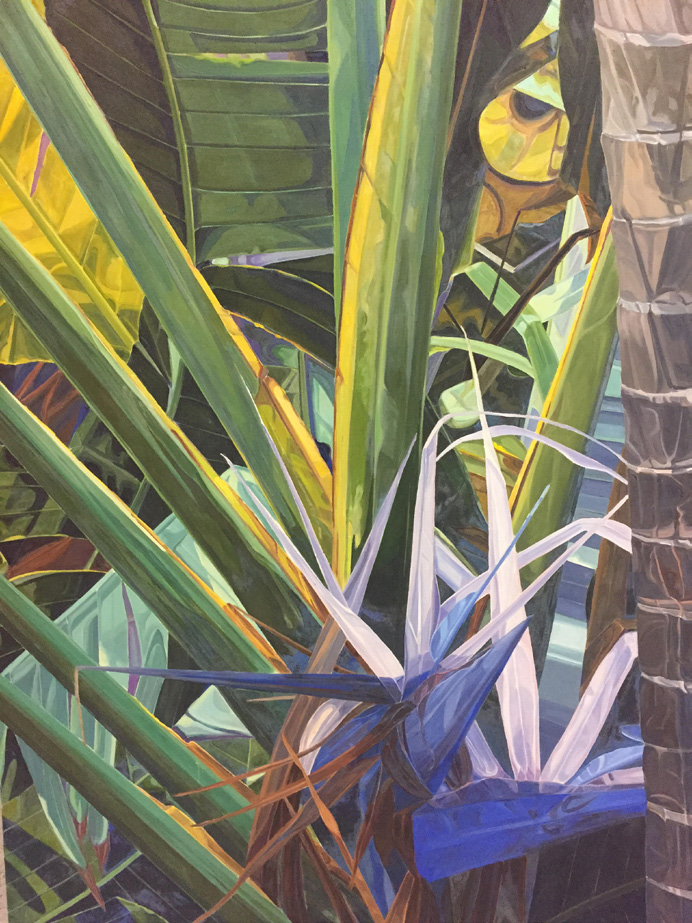
In Gallery&Studio’s Summer 2022 issue, you met the breathtaking surrealist painter Margaret Cosgrove (1924-2015), my lower school art teacher. She provided excellent preparation for the rigorous curriculum of art that was to come in middle and upper school. Cosgrove’s younger colleague, Joanne Claybaugh Chorney (1945–2019), painted glorious portraits of tropical plant species, many of which she’d seen growing up on Hawaii. Georgia O’Keeffe and Alex Katz are the ancestors of Chorney’s heroic flora, their distinguished DNA evident in the large scale, bright, flat colors, and micro/macro abstraction. These are not delicate, decorative little blossoms, but bold, hothouse beauties—strong, vibrant, sensuous. One single arrangement telescopes four separate plant species: Musa; Great White Bird of Paradise; Reed Palm; and Fan Palm (Palmetto). Zooming in on petals, leaves, and stalks, Chorney opens our eyes to entire forests, exalting plants with her up-close, insect’s-eye POV.
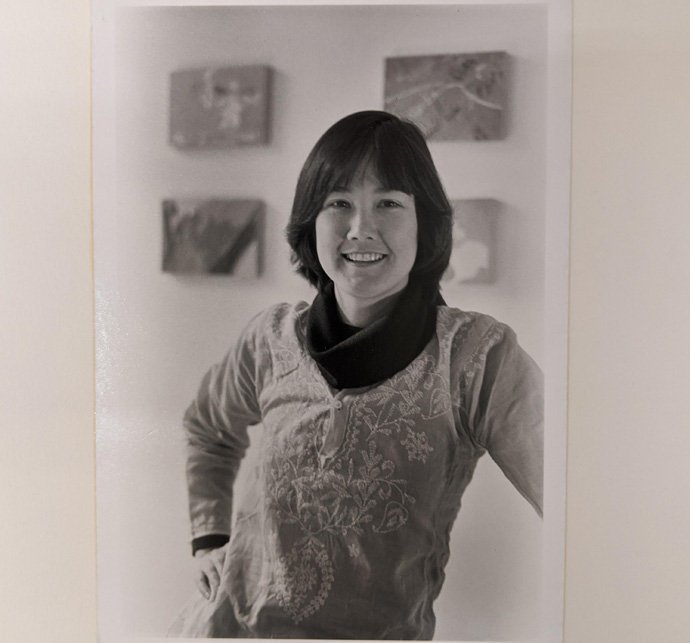
The strength to stay soft, to appreciate flowers and leaves; the ingenuity to preserve them in one medium or several—these are vital parts of every woman artist’s arsenal, whether or not she chooses to deploy them. Still here, still inspiring and making gorgeous art, are the other two artist-educators who helped to lay the philosophical foundation of MSEUM. Dianne Martin, former head of the Spence School Art Department, continues to preside over her immaculate, pristinely organized studio with ageless energy, in a house with an extraordinary garden that she designed when she moved in decades ago. In a lovely gesture, she has made her studio the homebase of the newly-opened Studio 41, a dynamic collective of her fellow Queens artists; see their work exhibited every Saturday and Sunday afternoon, from 1–5 pm. (Instagram: @Studio41_lic)
When leaves and flowers appear in this master printmaker’s compositions, they are rendered Mt. Rushmore-monumental, as if pressed flat between the pages of a giant book. Other “traditional” subjects of women’s art appear in Martin’s work, equally un-traditionally represented. Consider her totemic portraits of ultrafeminine symbols, lipstick and lingerie. This is lace with muscle, cosmetics with cannon power. Exquisitely feminine dressmaker details—the frilly hem of a petticoat or evening dress—are immortalized in Martin’s recently-completed monotype, aptly titled Ruffles, but there is nothing frivolous about these tough ruffles.
MSEUM’s tagline is “Know Unknowns,” so imagine my delight to see Raincoat, Martin’s large-scale (40″ x 60″) pastel and charcoal drawing of a trenchcoat that is ostensibly empty, yet pregnant with meaning—in the artist’s words,
“definitely a feminist work, and a response to Jim Dine’s Bathrobe.” It’s a perfect symbol of the forgotten woman artist that is MSEUM’s mission to celebrate and make known; the ghostly form could be a female counterpart to Claude Rains, star of the movie The Invisible Man: Invisible Woman. Standing and modeling as if posing for the late New York Times lensman Bill Cunningham, she is conjured in the red, black, and tan palette of a certain fashion luxury label.
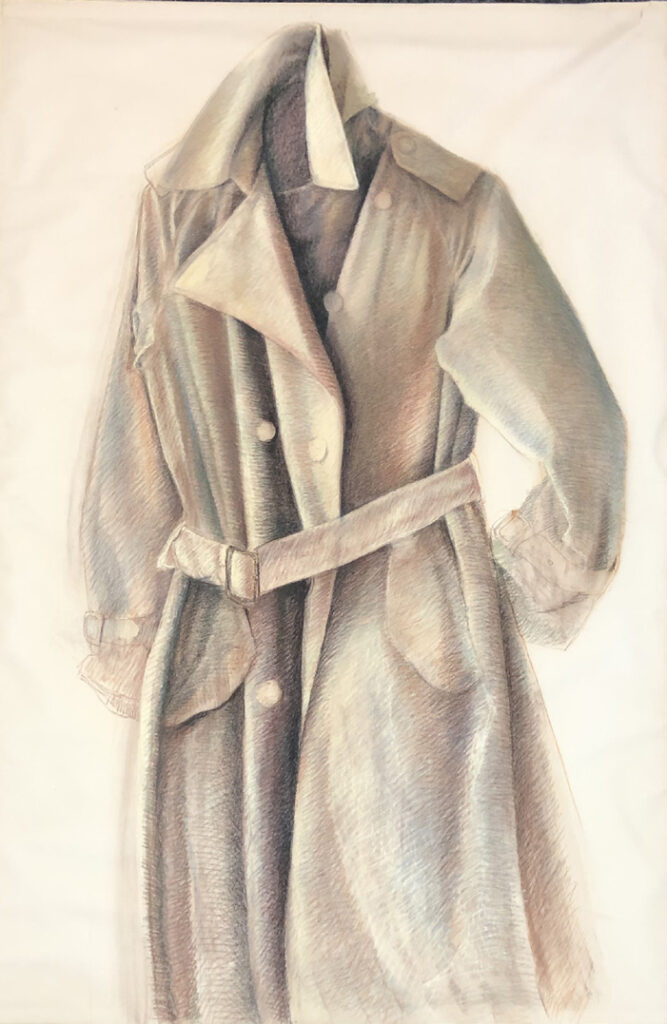
Martin invites us to picture this Invisible Woman, indeed to co-create her: anonymous, invincible, a brave, Burberry-clad soldier in the continuing battle of the sexes. Tightly corseted by a frame since her creation in 1980, the ravishing Raincoat developed furrows, as we all do; recently unframed, she wears them proudly, indeed fabulously. “Over the past thirty years the paper has formed itself into wrinkles that are set in stone, so to speak,” Martin says. “The wrinkles have become part of the piece, part of the history of the piece.”
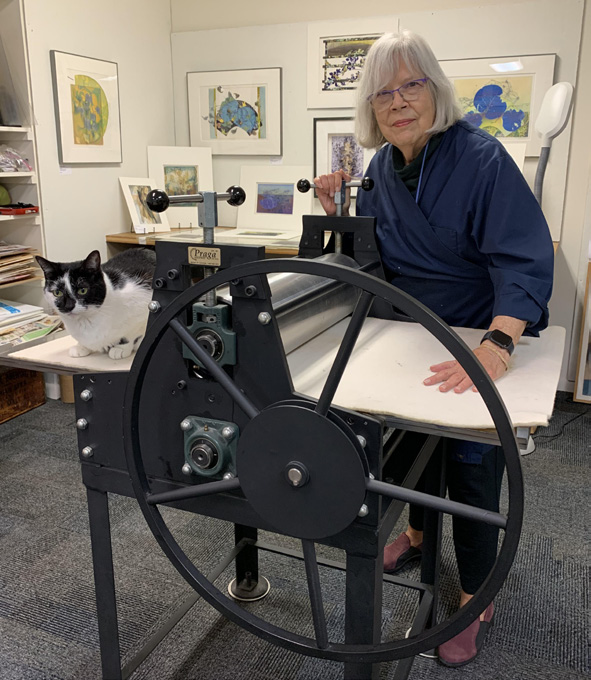
Conjuring imagery through the medium of textiles is the third master of my Upper School art education: Erma Martin Yost. In this artist’s hands, fabrics are not functional material for dresses or quilts or embroidered pillows. Rather, they are purpose-built material, transporting as magic carpets, wool felt superfibers that lift the things they depict far out of the decorative, functional realm and into positions of conceptual power. The abstract figure that is Woman!, with shades of Stonehenge and stained glass, lifts her arms to reveal the splendid sleeves of her cardinal-red robe. She’s the embodiment of freedom, ceremony, majesty: tribal, canonical, a secular goddess, every stitch of the ornamentation applied to her queenly costume acutely engineered by Yost to lead eyes and spirits upward.
About those stitches: “I started Woman! in 2017 and got stalled,” Yost recalls. “I just kept looking at it, not knowing what to do next.” So she set aside the felt components of this as-yet-untitled and incomplete work, turning her focus to other projects. The following year, a major historic event gave her the work’s title, and helped guide her toward its completion: “On January 4, 2019, the day that Nancy Pelosi swore in 100 Congresswomen after the 2018 midterm elections, I knew I wanted to watch the event on MSNBC—but I didn’t want to sit and spend three hours in front of the TV. So I took the felt panels, and my little basket of threads, and went to sit in front of the TV in the family room. I decided to continue stitching and see what happened.” Falling into a creative trance, “I almost forgot what I was doing; I just kept stitching and stitching and stitching. And it was finished.”
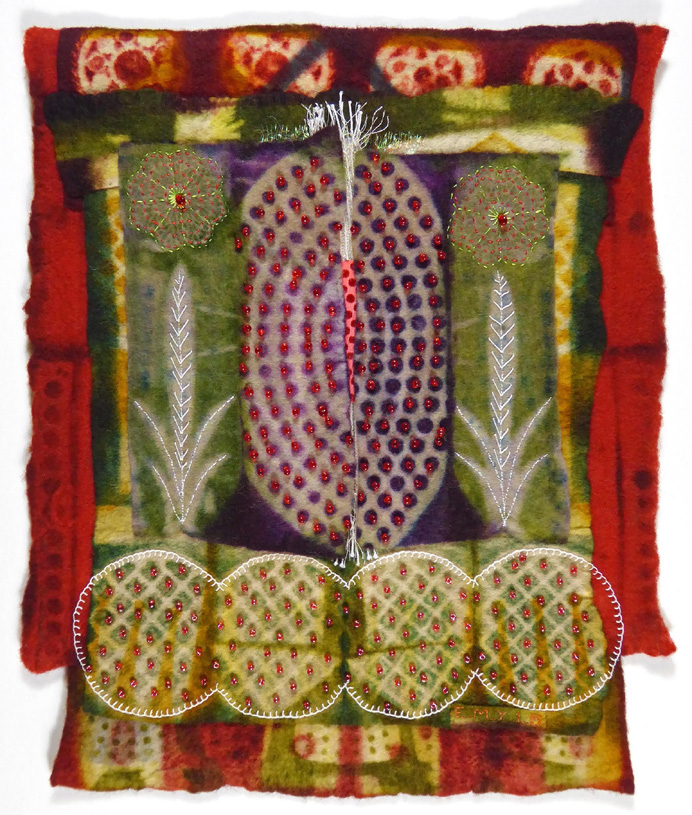
Even when Yost’s subject is less historically momentous, or perhaps appears small—the garnet-like seeds of the title fruit in Pomegranate Grove, rendered with glass beads—it is writ large, with the same painterly skill on display in Yost’s earlier medium of choice, oil on canvas.
I am eternally grateful to my artist-teachers. Thanks to their fine example, MSEUM will always welcome thought leaders who dismiss prim preconceptions of “the right colors” in favor of kaleidoscopic rainbows of possibility—gardens of women in full flower. G&S
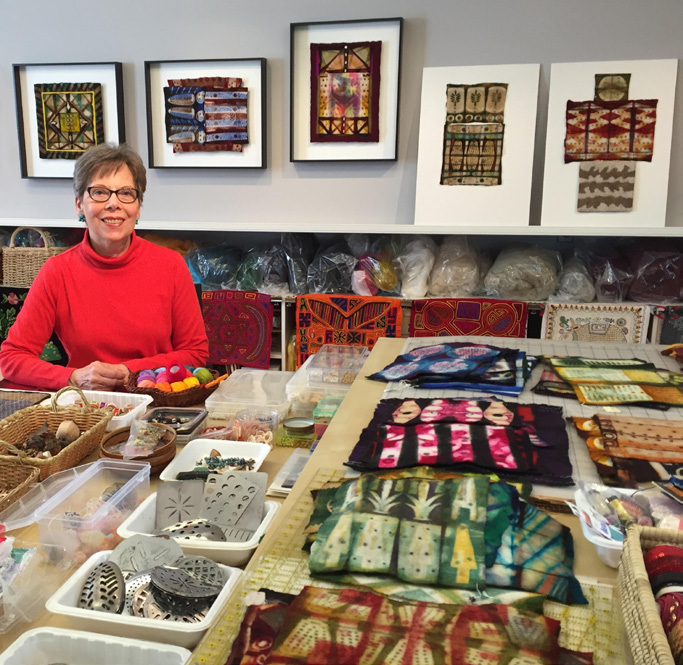





Leave a Comment